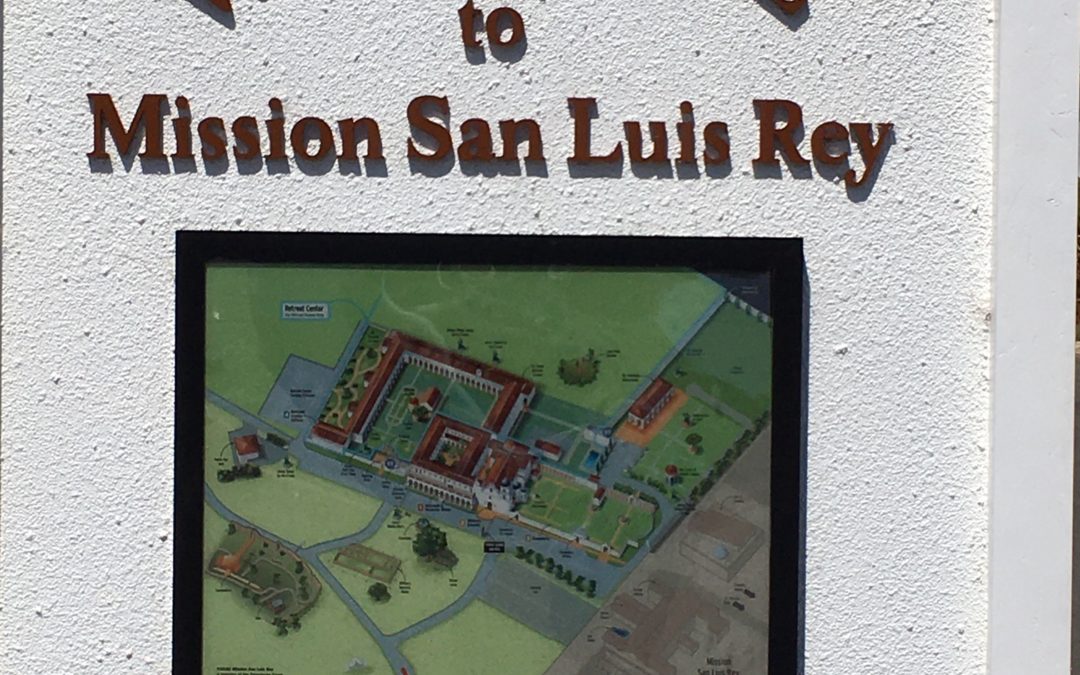Since I grew up in California, I have visited many of its famous missions, but until June of 2021, I had never been to arguably one of the most beautiful – Mission San Luis Rey de Francia. Located in an Oceanside neighborhood, the architecture and landscape of this “King of Missions” is simply gorgeous.
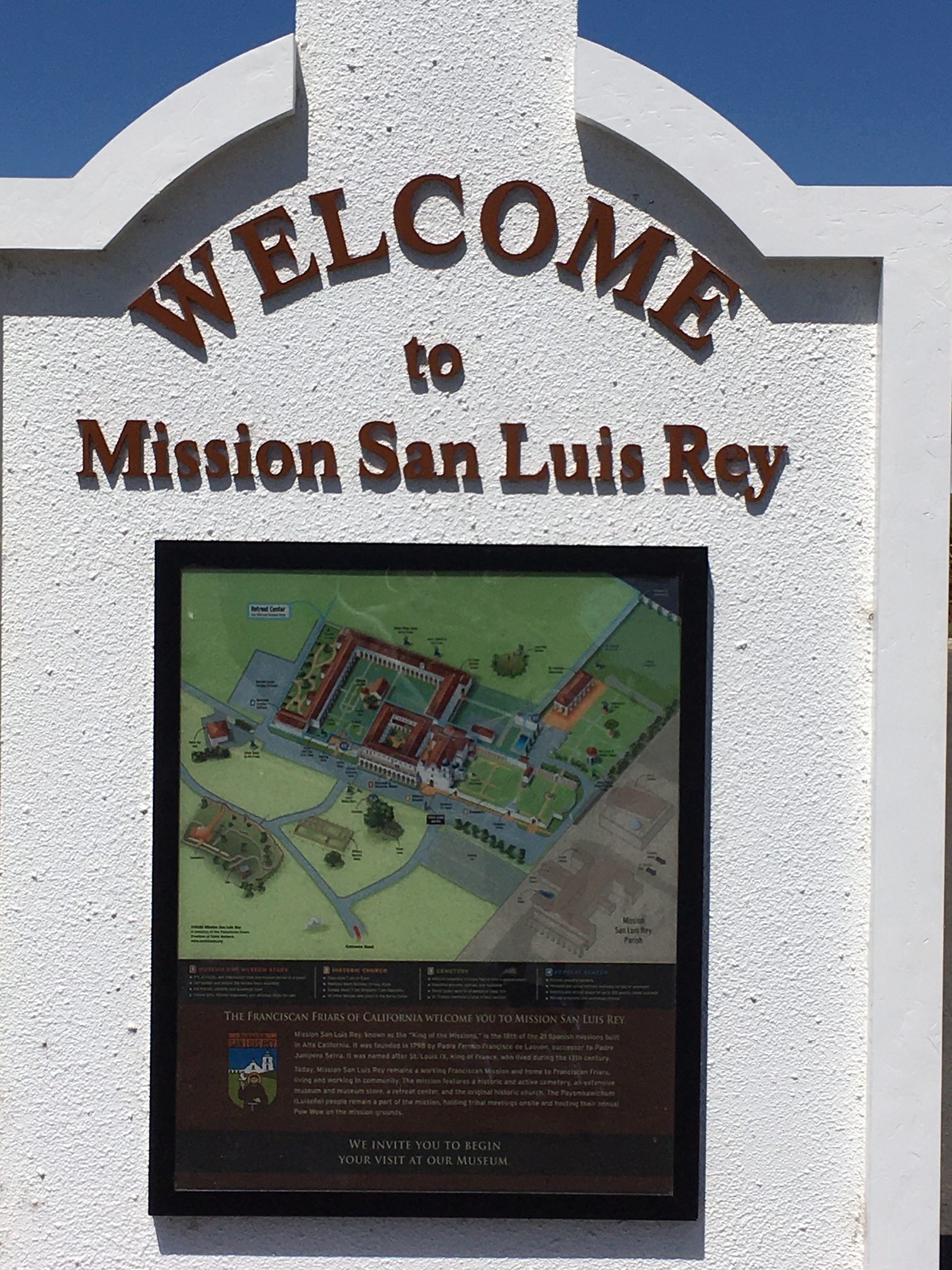
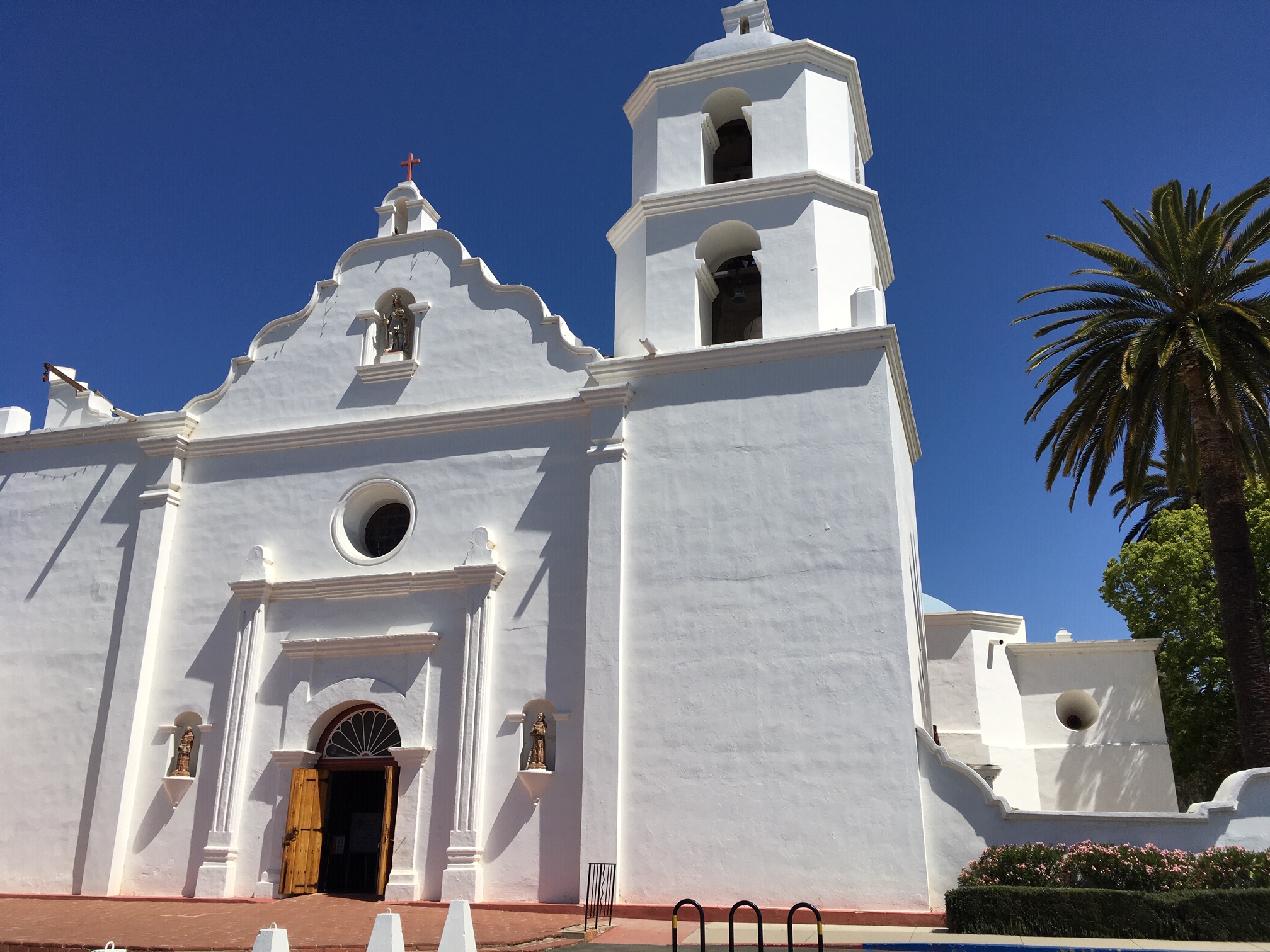
Mission San Luis Rey de Francia was named for King Louis IX of France. King Louis was a contemporary of Saint Francis and taught by him. He was also reputedly a kind and caring ruler, and famous for bringing the Crown of Thorns from Constantinople to its current home in Notre Dame. He was canonized as a saint in 1297.
Construction on the original mission was completed on June 12, 1798, under the supervision of Padre Fermin Lasuen, the successor to Father Junipero Sera. San Luis Rey was the 18th of the 21 missions constructed by the Franciscans in Alta California District.
As you enter the driveway which wraps in two directions around a green picnic area, the brilliantly white church with its solitary bell tower is the first thing to catch your eye. This is actually the third church built on the site, but it has been here since 1815. The statue high above the door portrays Saint Louis while the smaller alcove to the right of the door is of Saint Francis.
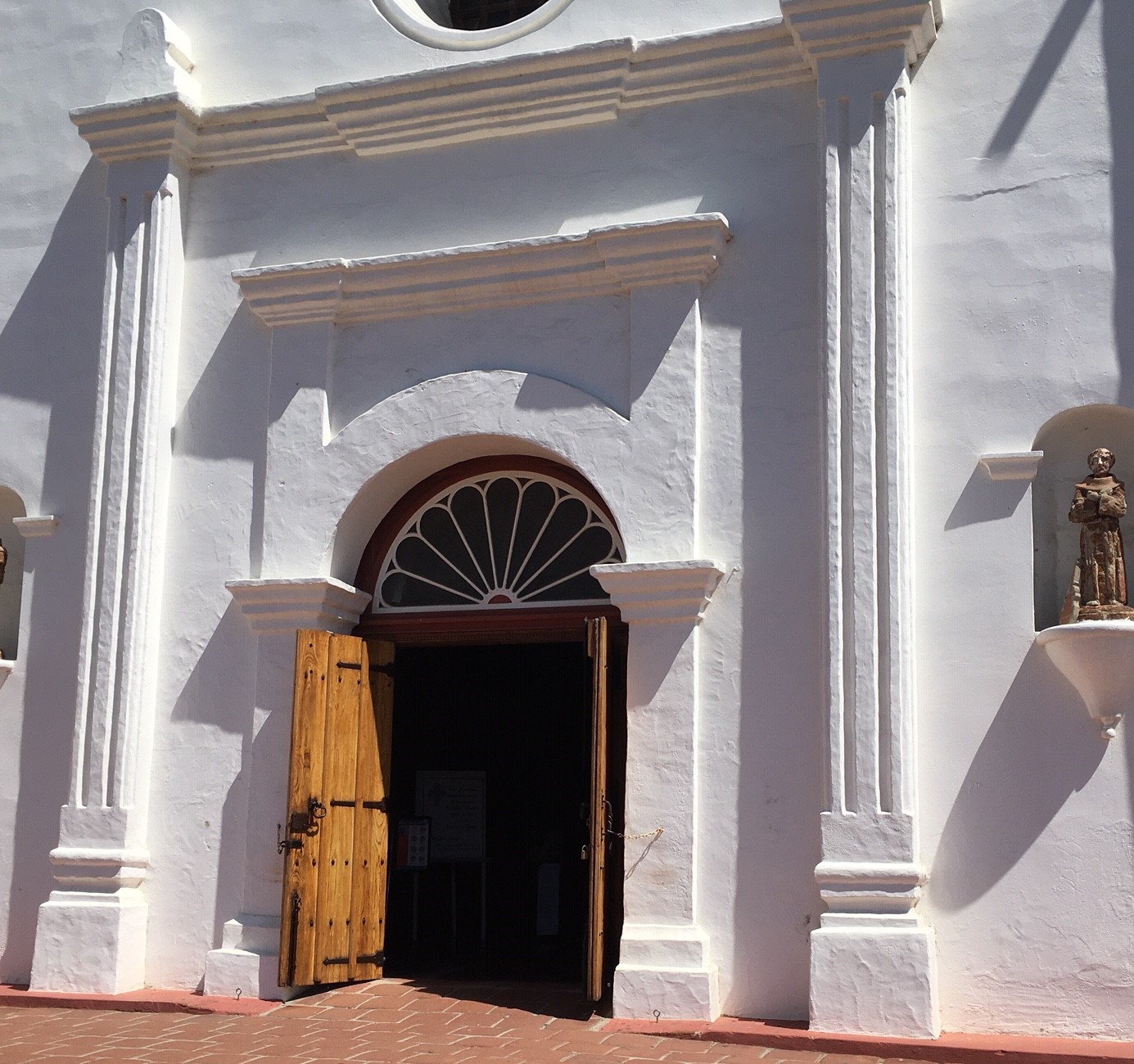
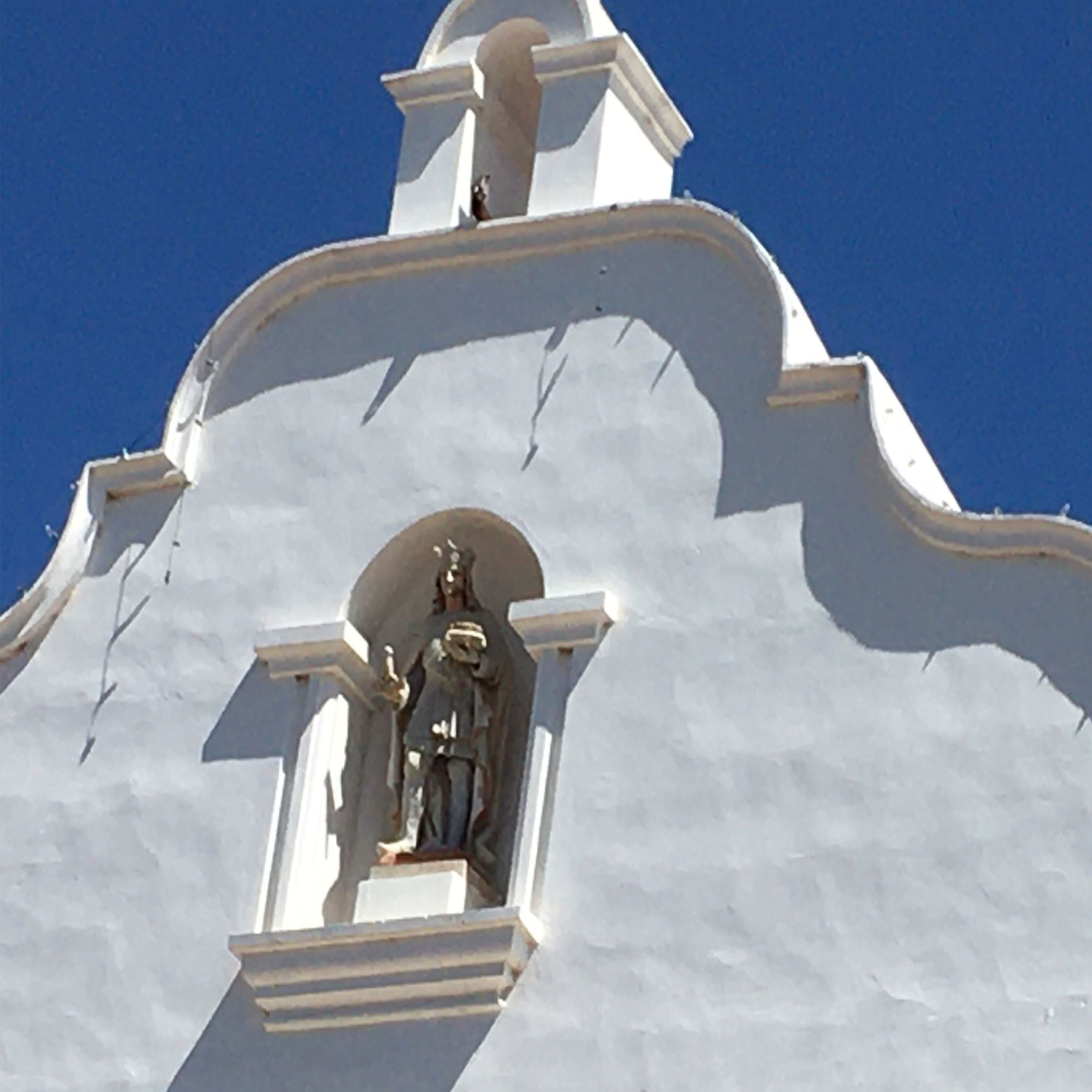
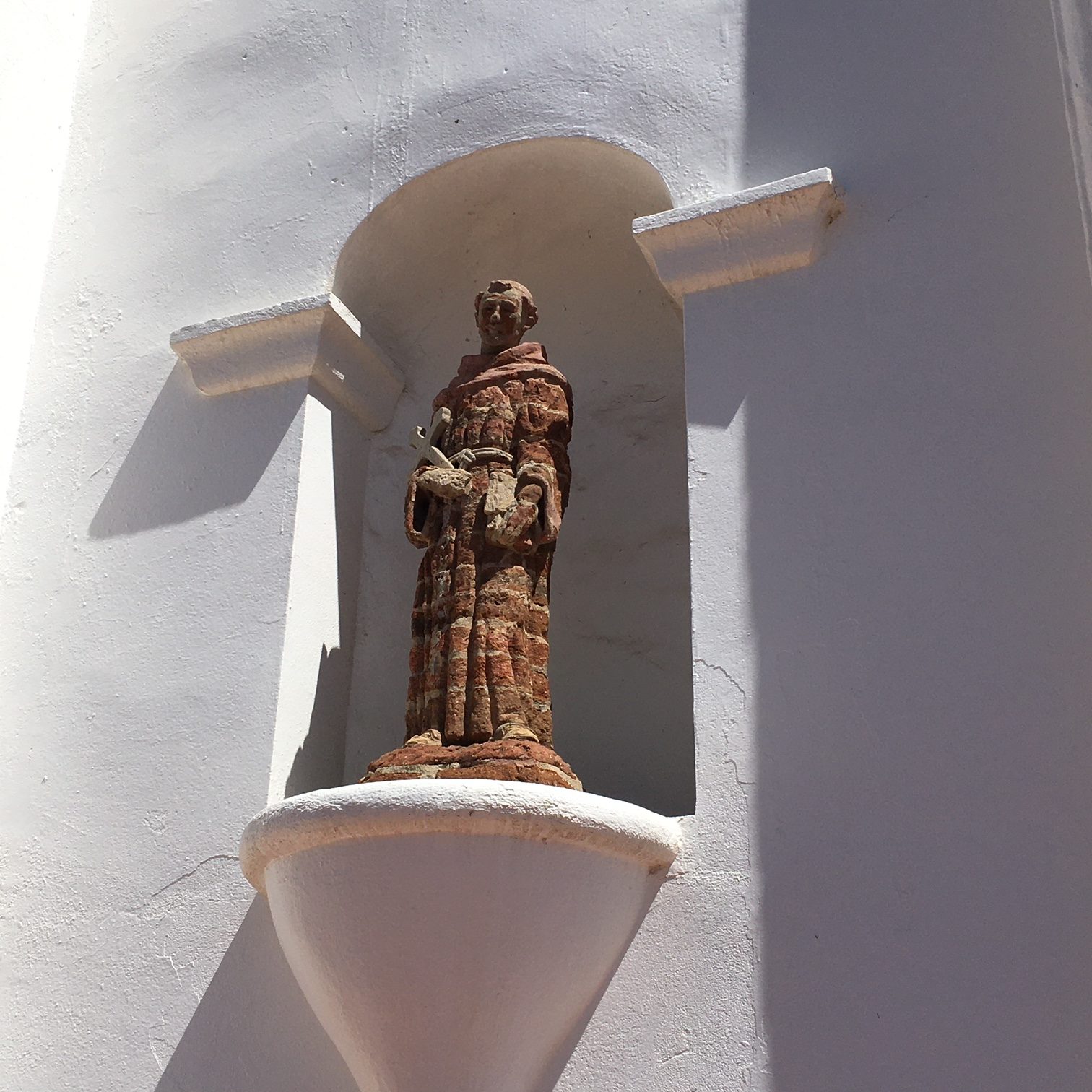
As you enter the driveway which wraps in two directions around a green picnic area, the brilliantly white church with its solitary bell tower is the first thing to catch your eye. This is actually the third church built on the site, but it has been here since 1815. The statue high above the door portrays Saint Louis while the smaller alcove to the right of the door is of Saint Francis.
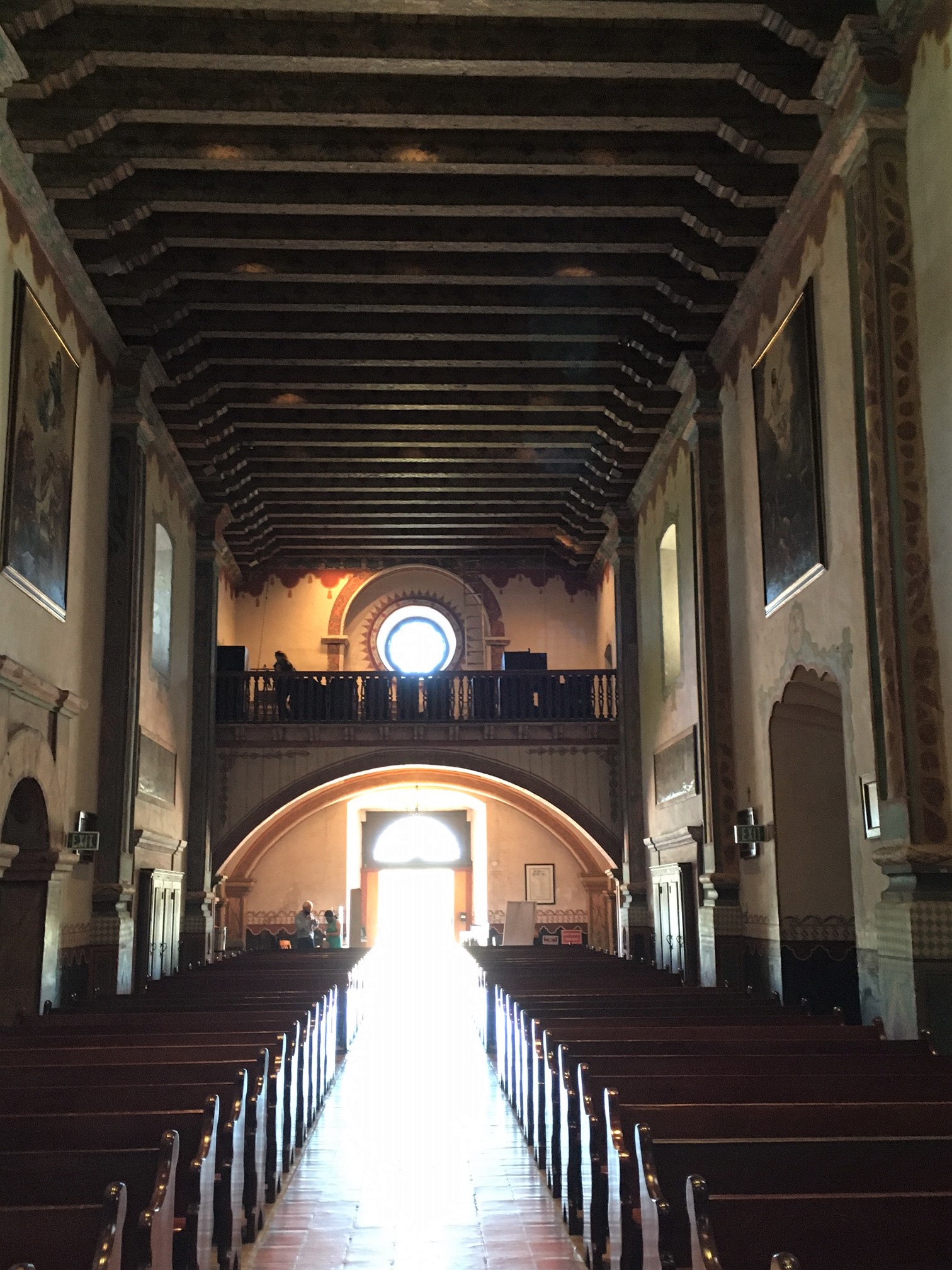
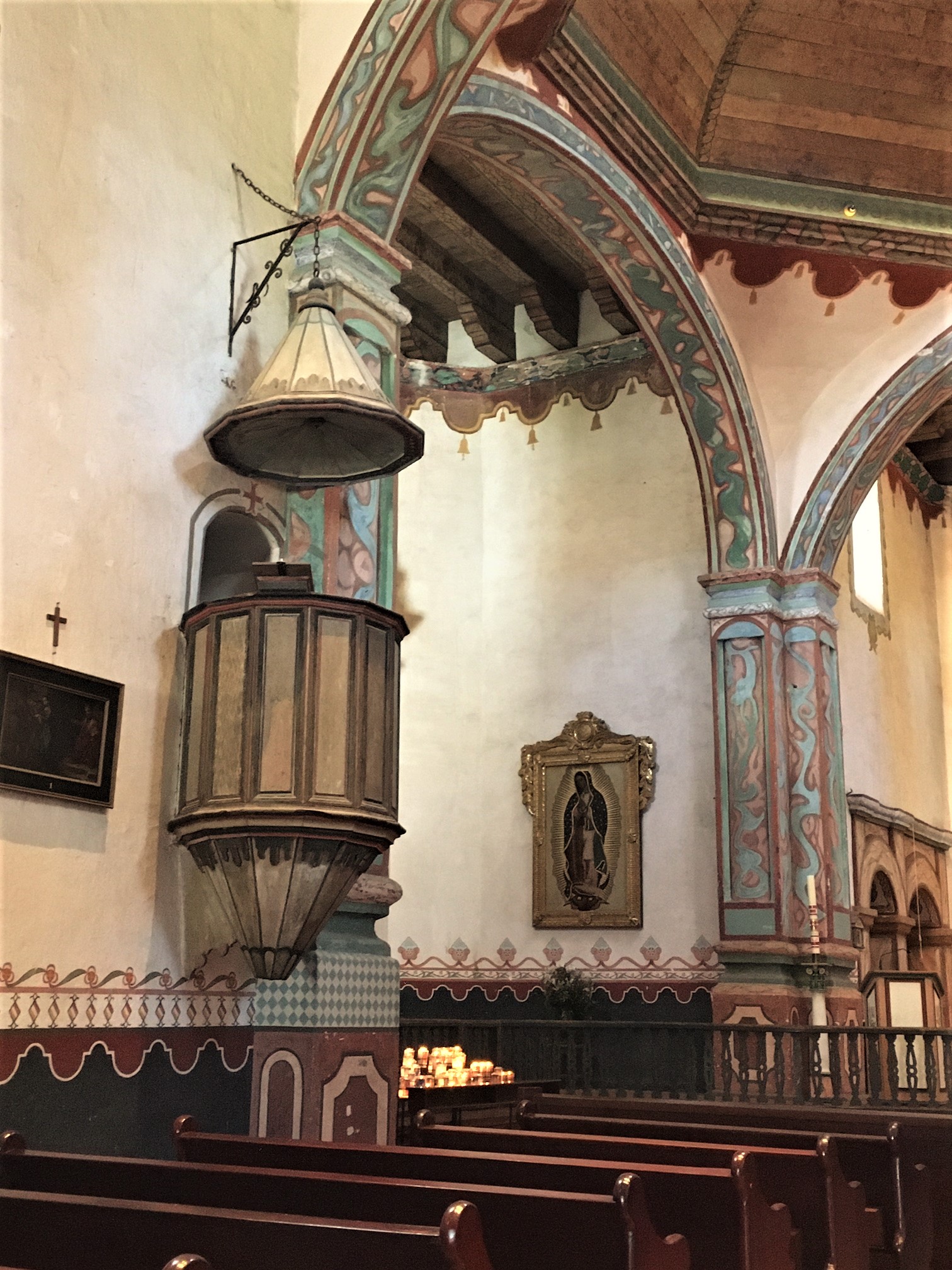
Inside, the church is laid out like a crucifix (technically the cruciform style) with a main aisle 165 feet long and 27 feet wide. Above the entry door is the choir loft, and near the main altar, a decorated pulpit protrudes from the wall.
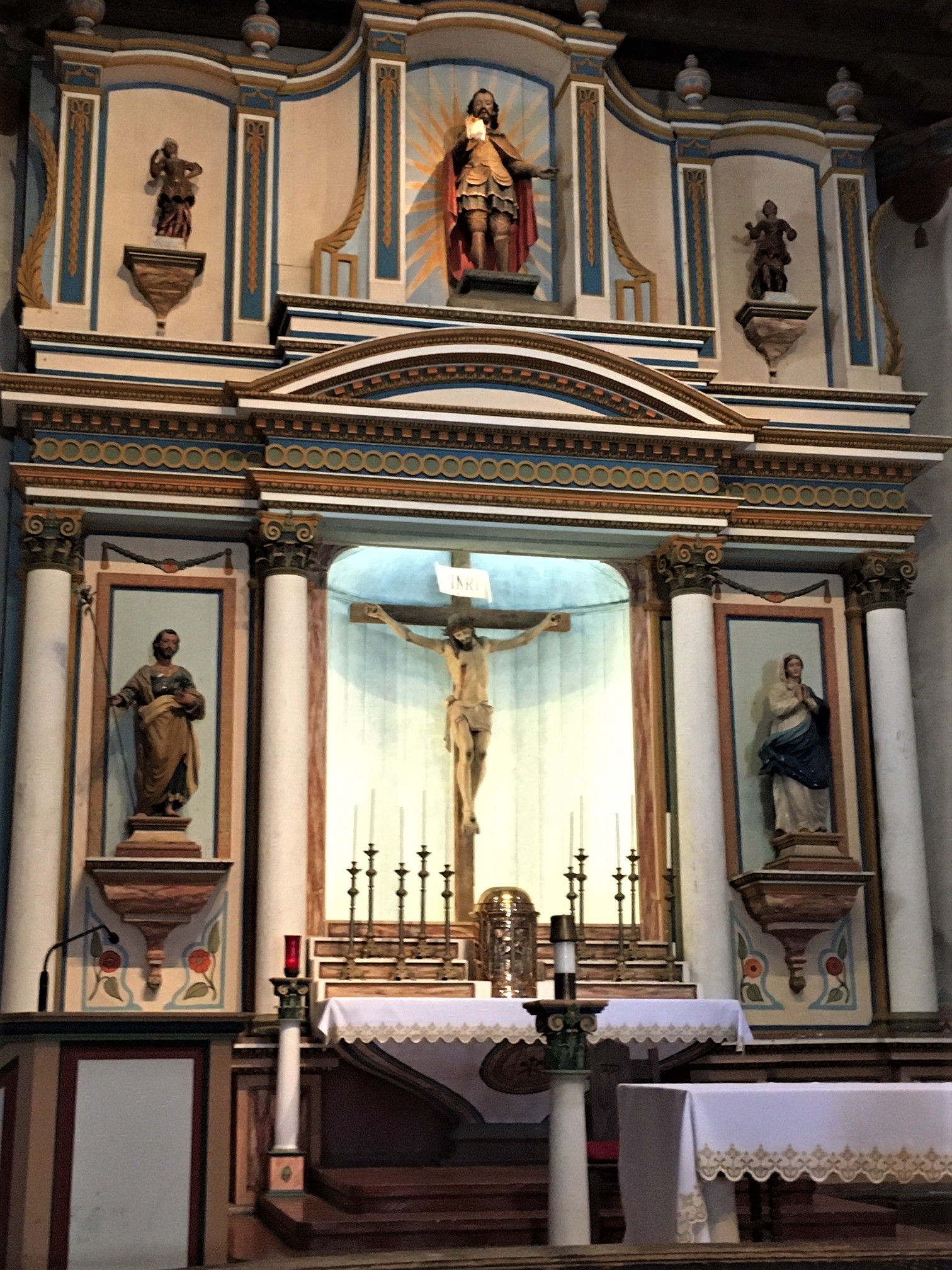
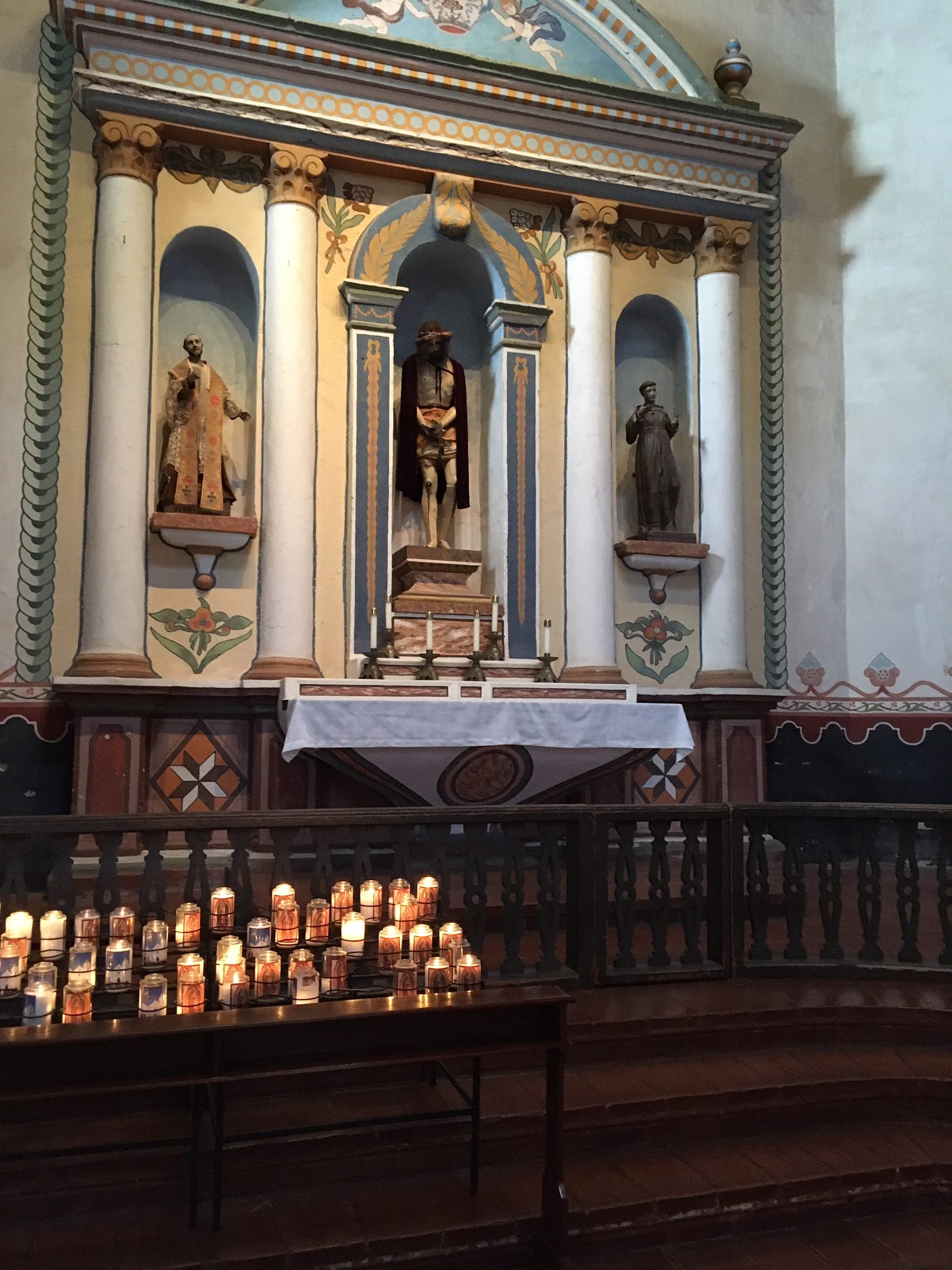
At the far end of the entry aisle is the main altar. To the left and right sides are secondary altars.
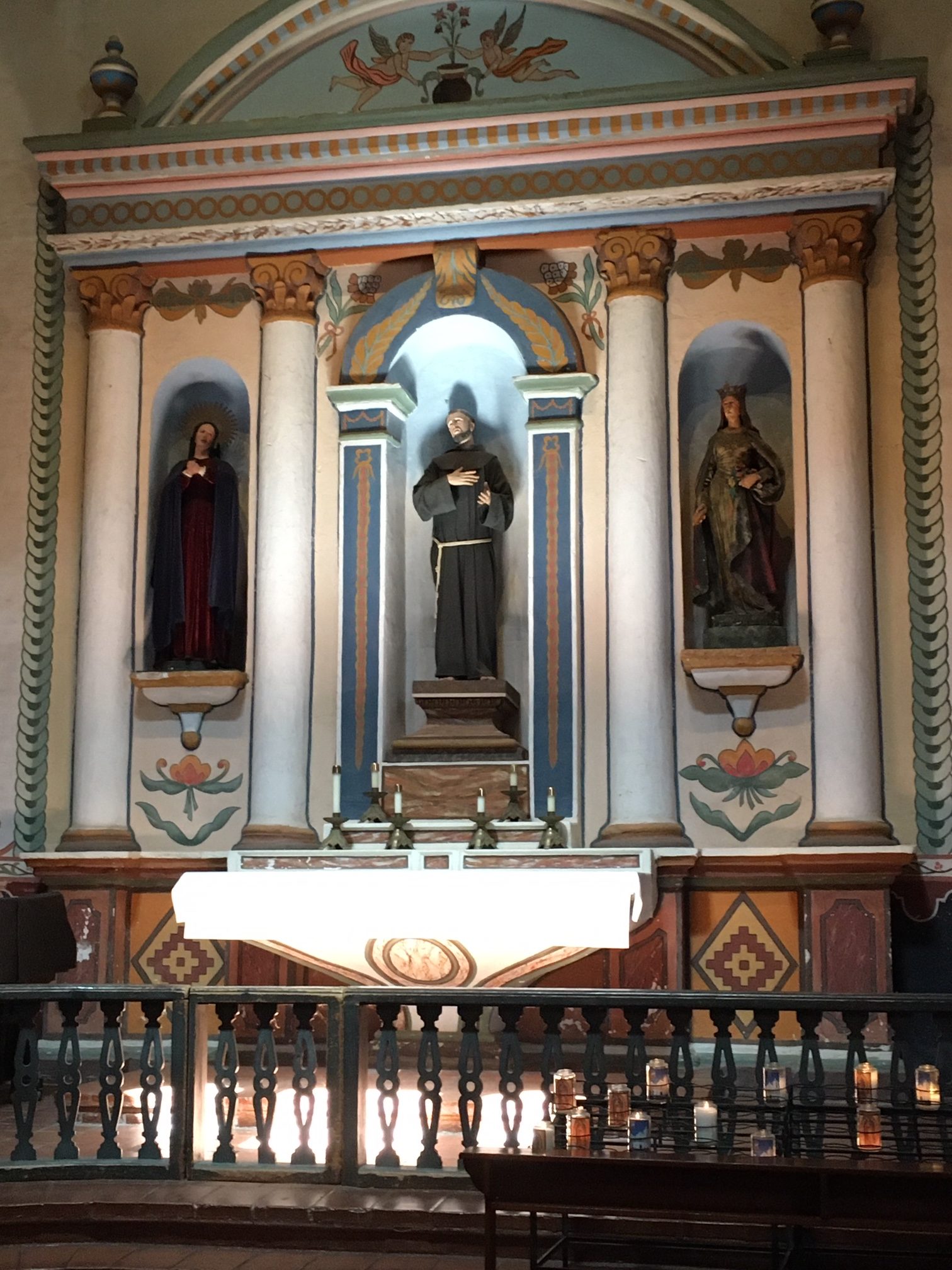
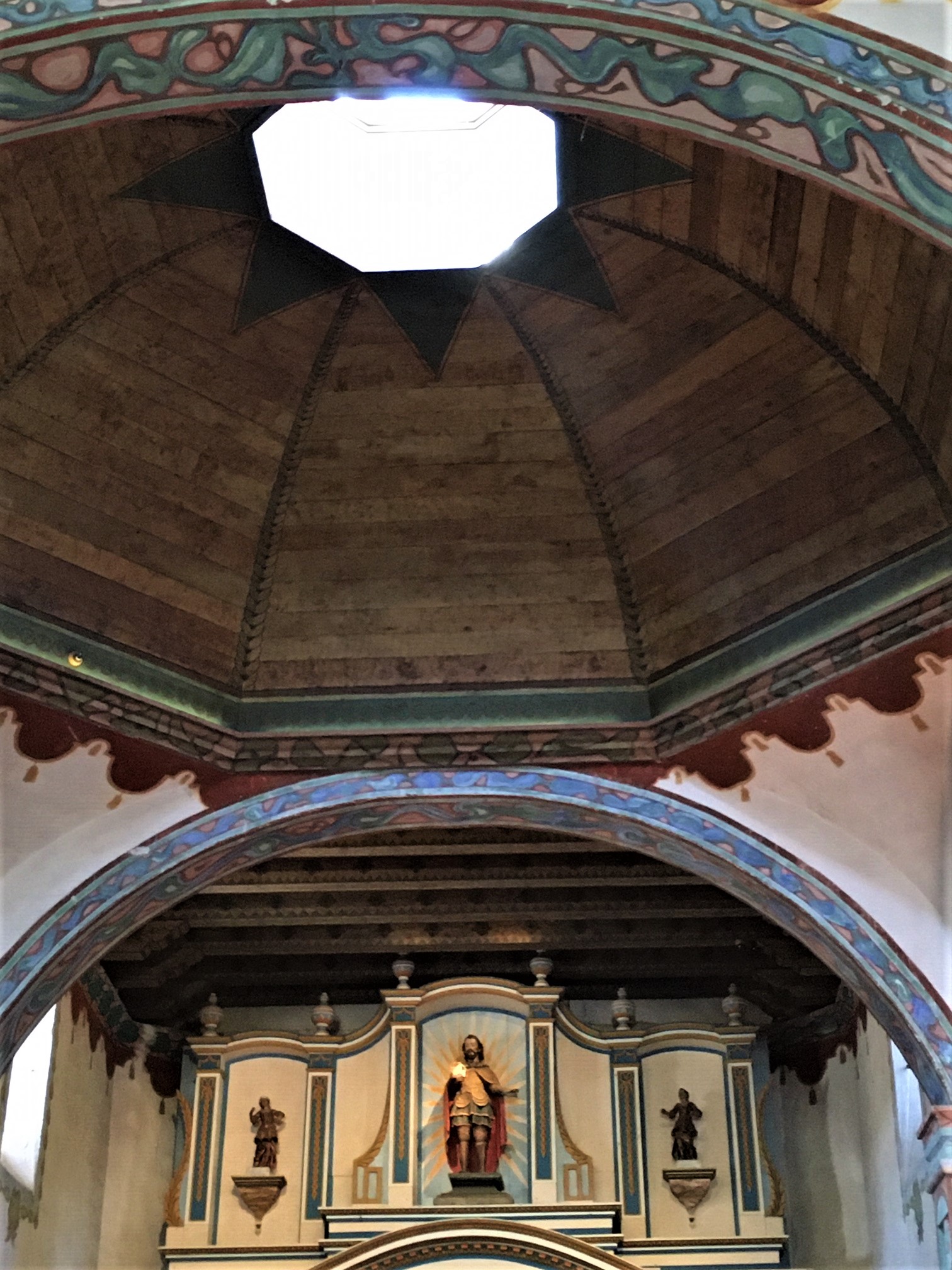
Above the main altar is a circular sky light. The arches are decorated with patterned or floral paintings. The church is designated as a National Historic Landmark because of its distinct Mission architecture.
At the height of the missionary era, Mission San Luis Rey’s structures and compound covered about 950,400 acres, not counting agricultural land. The mission housed the Luiseno tribe of Native Americans who were moved to the site and worked for the mission, making bricks, building, growing and harvesting crops, and raising geese, cattle, goats, and pigs.
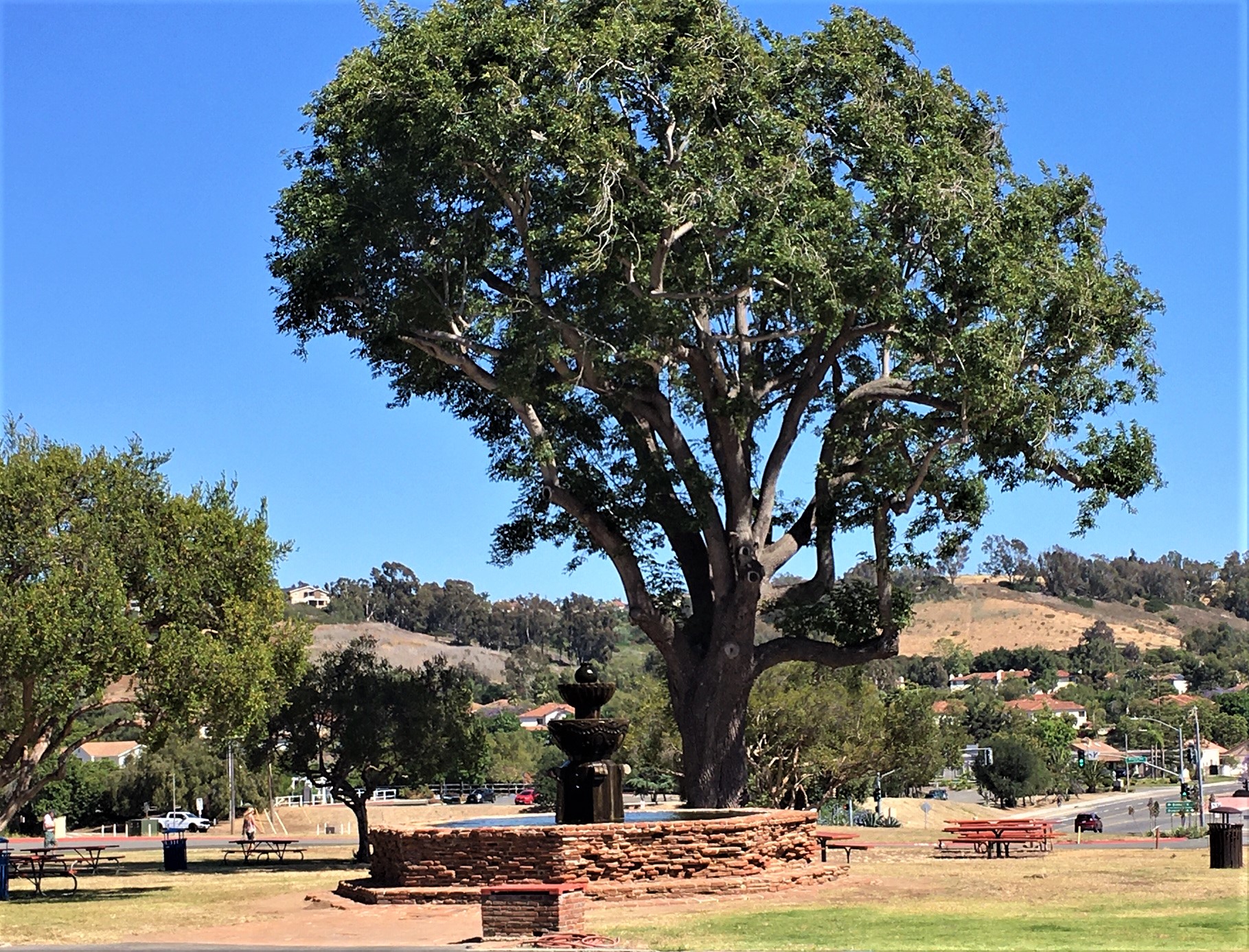
Most of the mission lands were sold after the Mexican Secularization Act of 1833 which also freed the native people to return to their own lands. For interesting insights into the role of the native Americans in mission life, you can read Indian Life and Custom at Mission San Luis Rey, written in 1835 by a Luiseno tribe member Pablo Tac, and translated by the Hewes in 1958.
From 1824 to 1893, no religious services were held at the Mission. It was used by the military for a short while and was then just neglected. In the 1900’s, two Mexican priests were given permission to restore the property and reopen it as a Franciscan college. San Luis Rey College opened as a seminary in 1950, but it closed again in 1969. Eventually, the Mission became a parish church, and that is how it functions today. Parishioners and Friars work together to maintain the Mission and to oversee all the services that are provided.
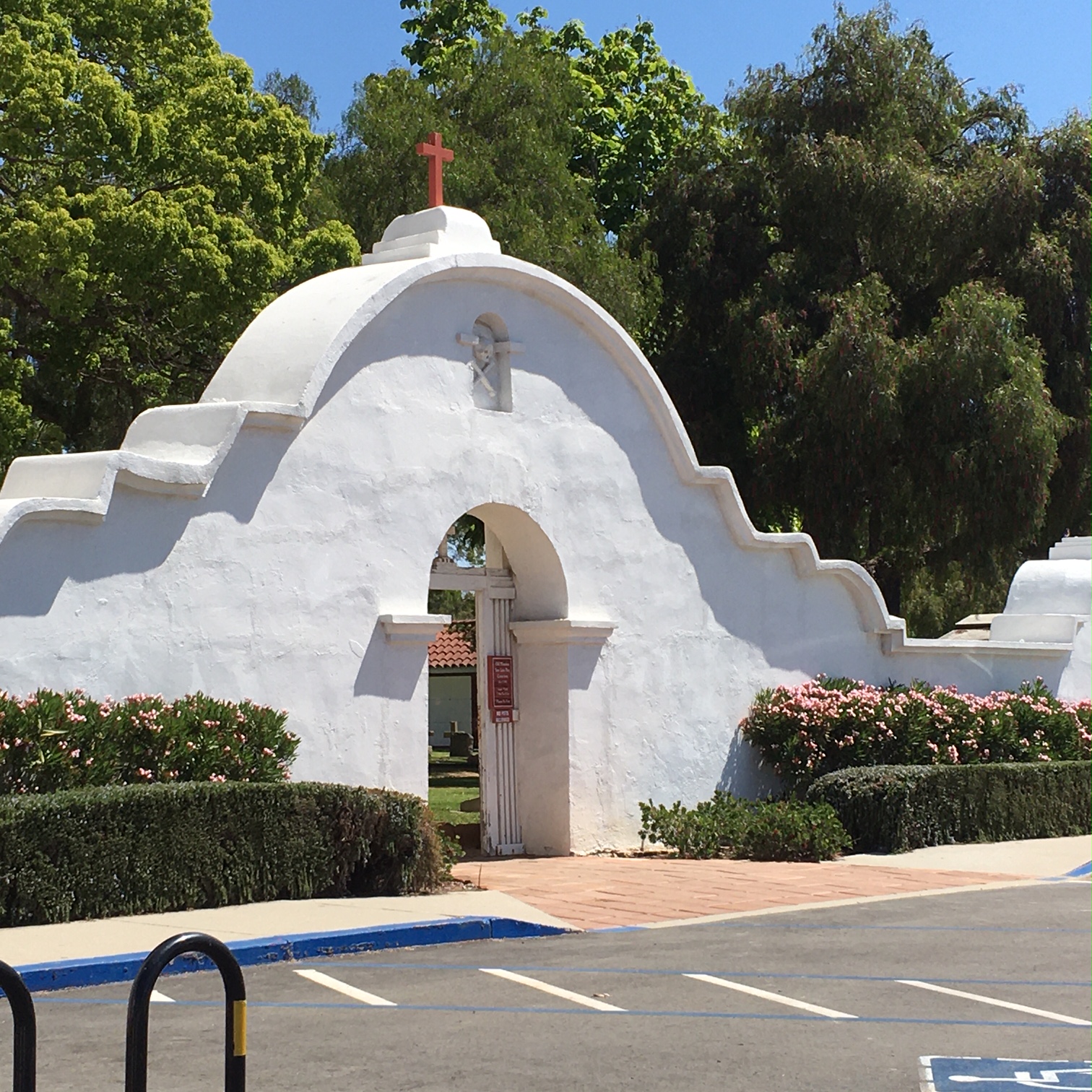
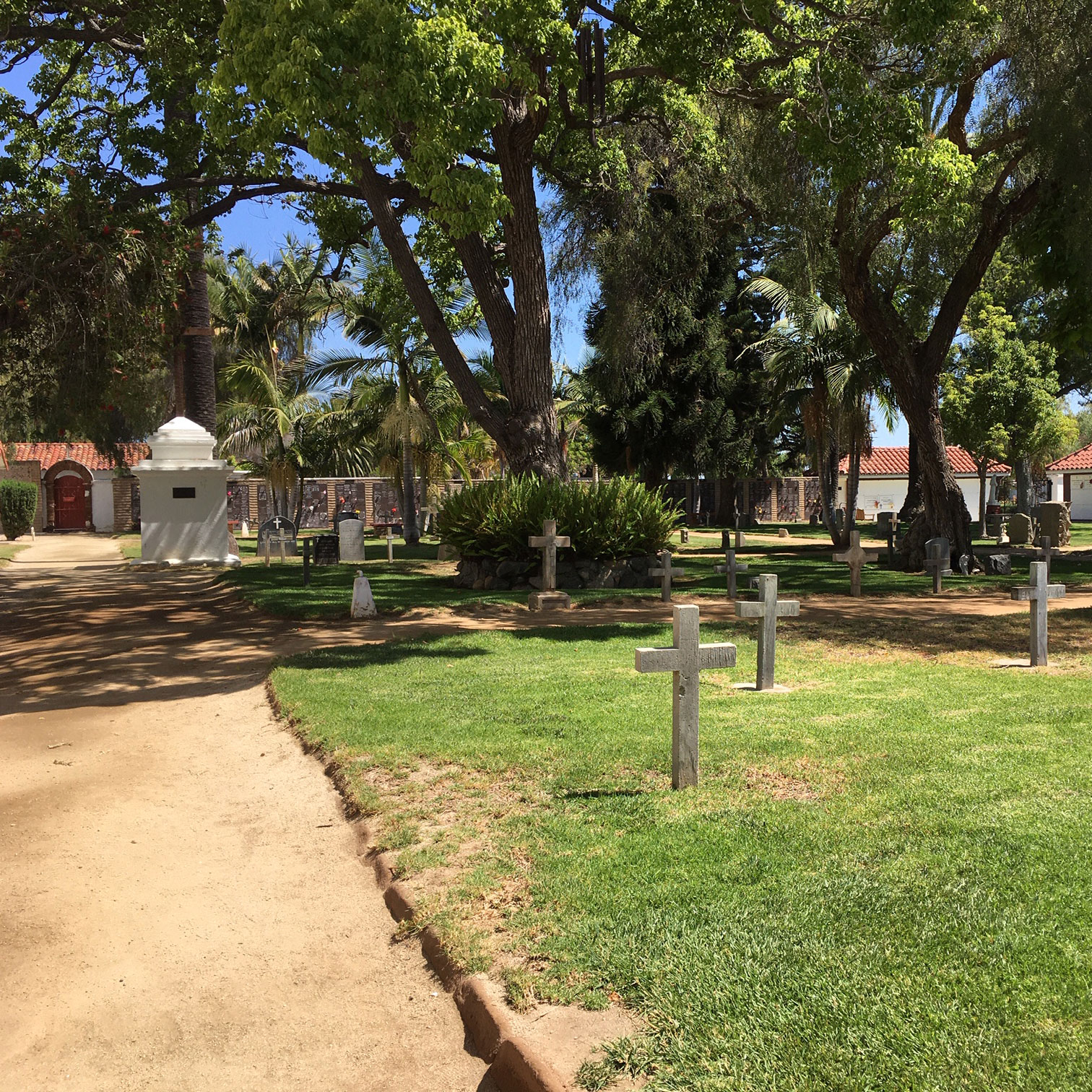
To the right of the church is the entrance to the cemetery which was established in 1798. It is the oldest in the north county, and I think still in use. Across from the cemetery and stretching in front of the full length of the church complex is a grassy area which has both picnic tables for families and life-sized statues from the Stations of the Cross.
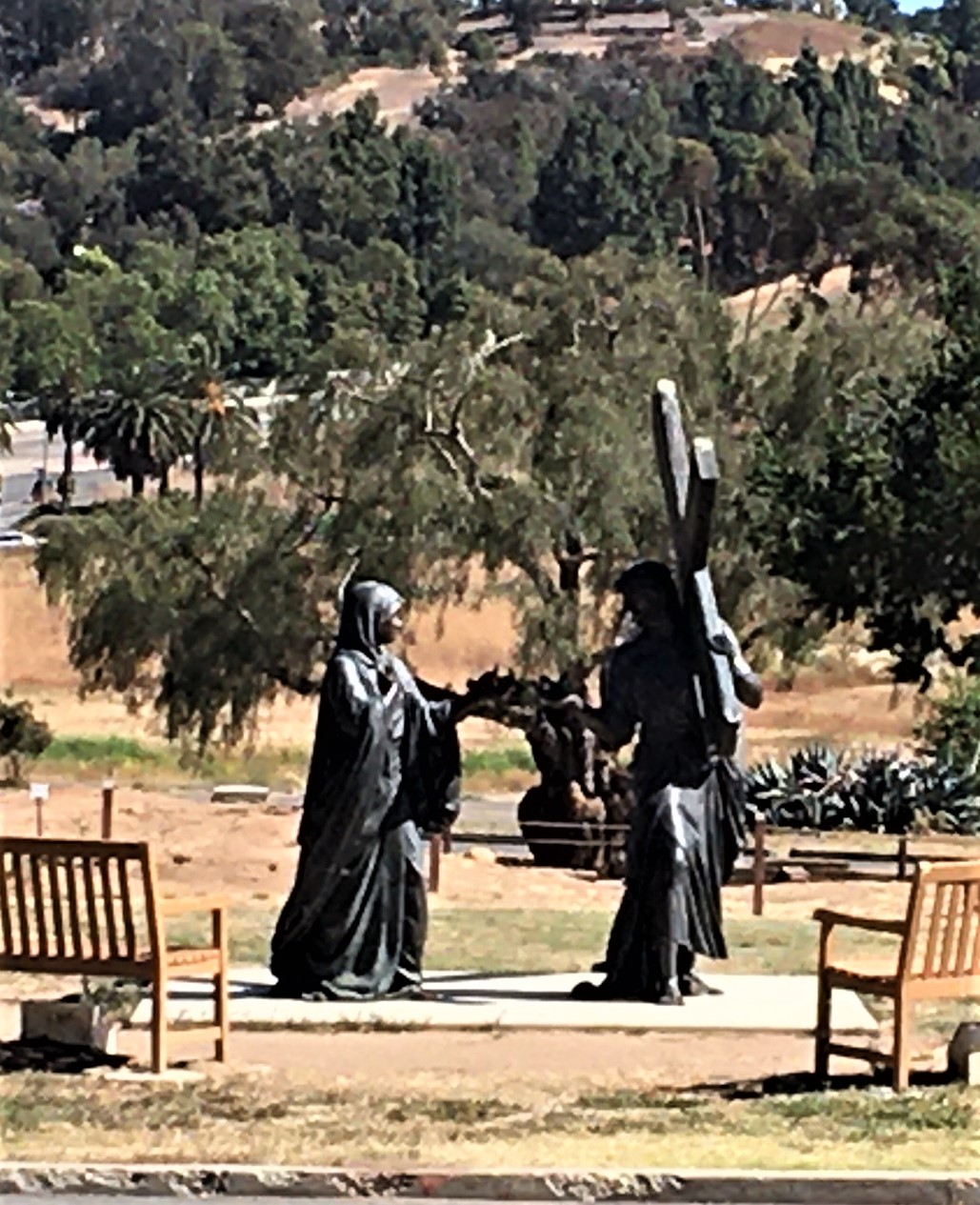
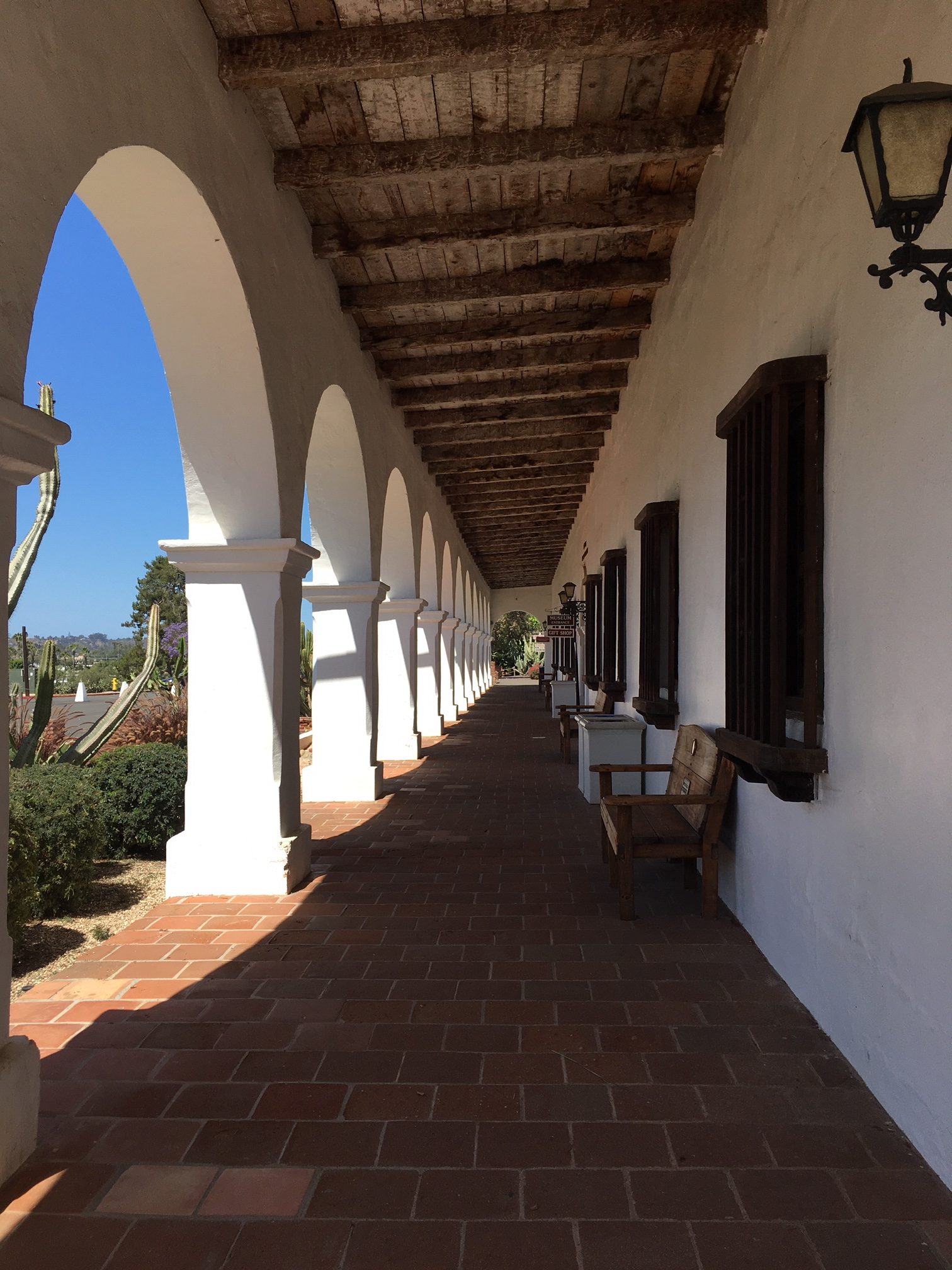
The Convento is defined by a covered porch which stretches from the Church to the end of the existing buildings. This creates shade and pleasant places to sit. Along this space, in addition to Church offices, are found the Gift Shop and the Museum, primarily staffed by volunteers. The Museum contains artifacts from Native American, Spanish, and Mexican cultures as well as items from the Mexican Secularization. Guided tours are available at certain times. You can also arrange to visit the Lavenderia which is an inventive laundry facility, the ruins of the soldiers’ barracks, and the brick kiln.
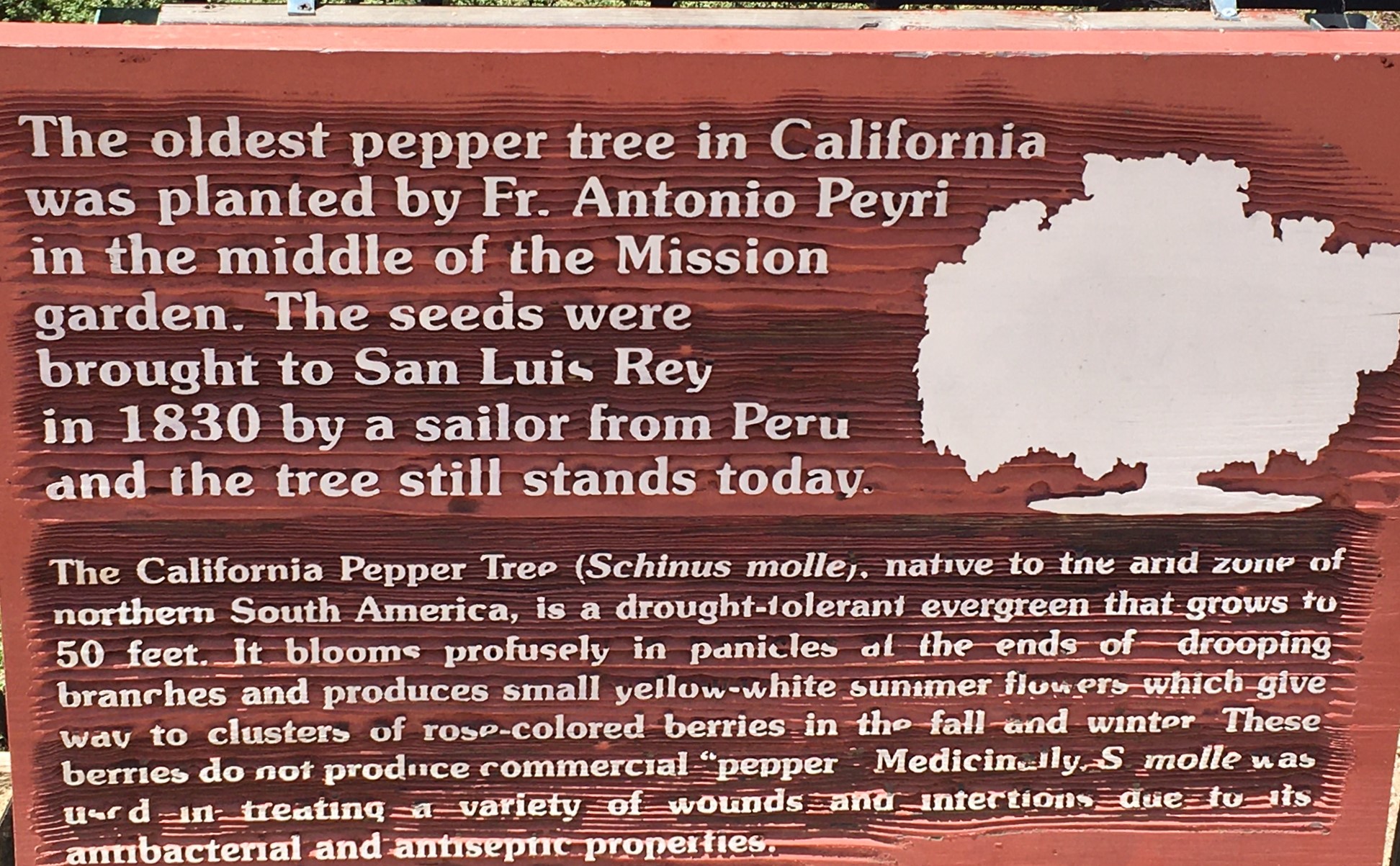
The far end of the Convento opens to the gardens, famous for the first Peruvian Pepper Tree planted here in 1830. Pepper trees caught on and are now widely planted in southern California – renamed, of course, as the California Pepper Tree.
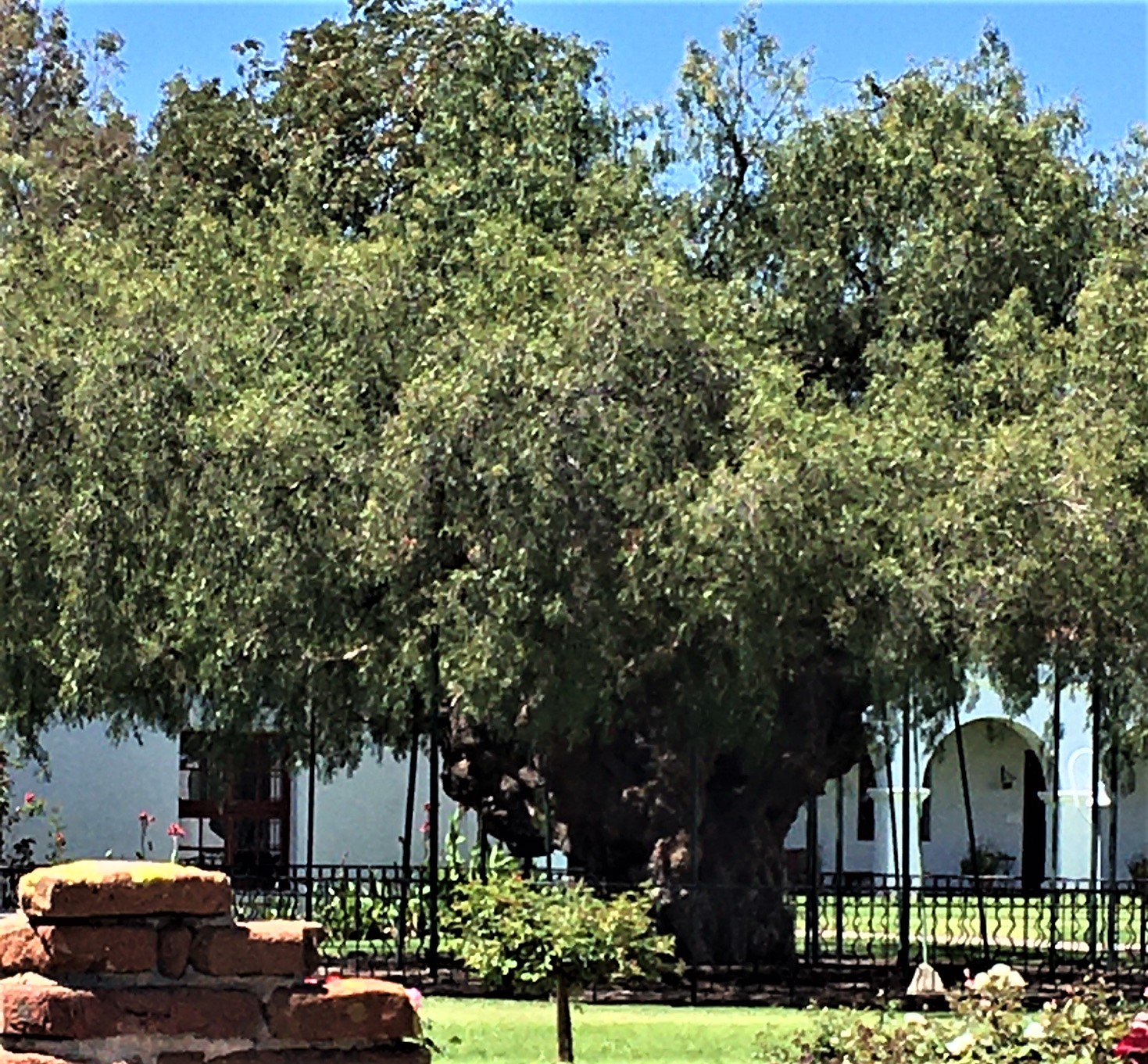
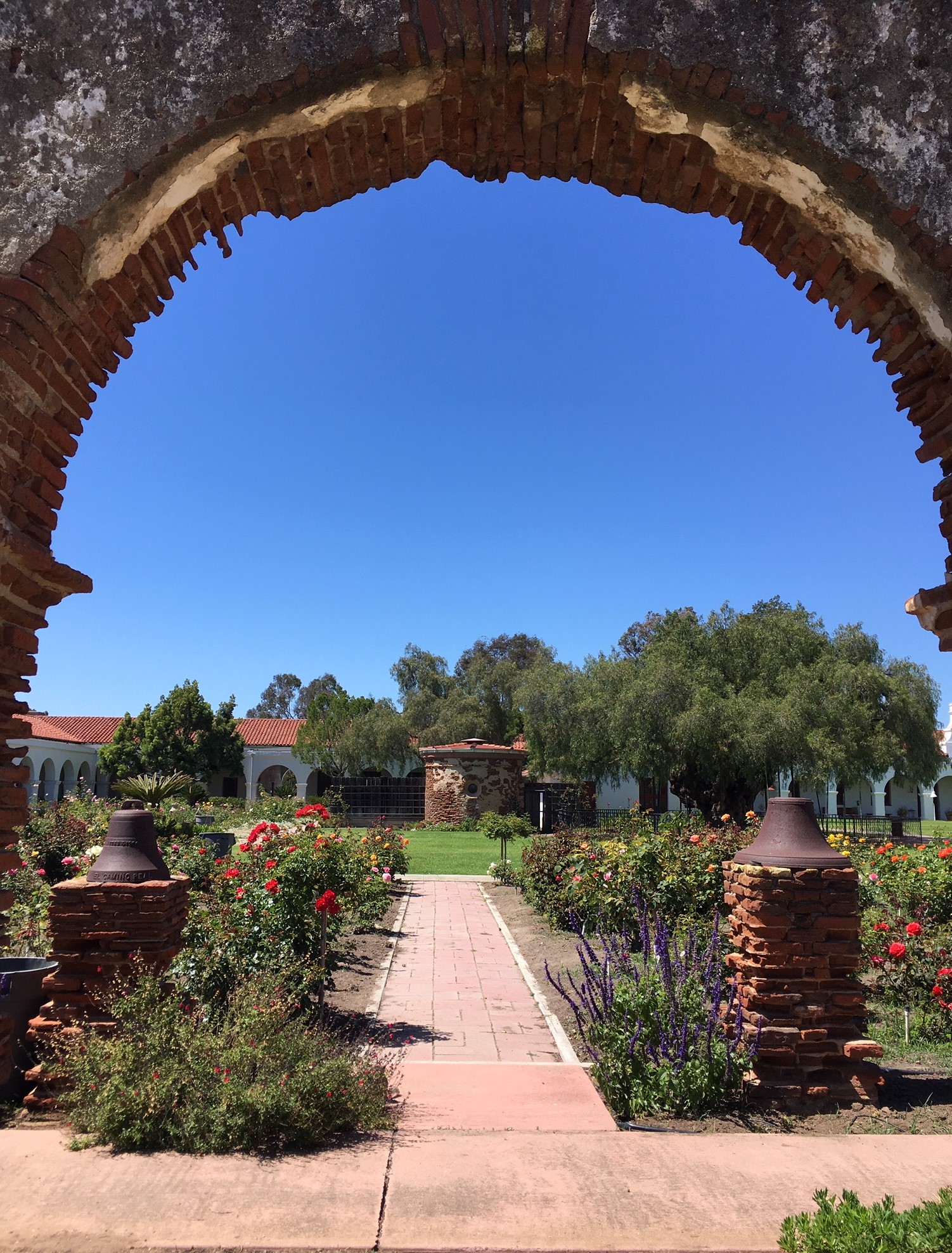
Also facing the gardens is the Mission coffee shop which provides coffee, tea, and some cold drinks, fresh baked goods, and tables on the patio facing the rose garden. It’s a very welcome place to end your tour.
When the Mission was restored to be a seminary, some of the buildings behind the gardens were converted into dorms. Now those rooms comprise Mission Retreat Center. If you go on line to their website (sanluisrey.org), you will see they maintain a busy schedule of retreats and other services. It is there you can also schedule behind the scenes tours. You can also schedule your own private retreat which for a daily fee includes a room, meals, and access to the beautiful gardens.
I was delighted to discover this beautiful and restful place – full of history and providing a welcome respite from Southern California traffic. If you’re in the neighborhood of Oceanside, it’s well worth a side trip to stop for a visit to Mission San Luis Rey de Francia.


